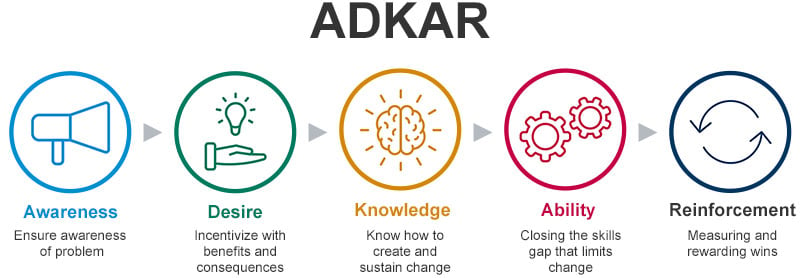
Developing and delivering on Environmental, Social, and Governance (ESG) commitments is at the top of most corporate agendas, with more than 80 percent of the world’s largest companies now reporting on ESG or sustainability metrics and performance. Operationalizing ESG across the workforce requires a credible plan and then adoption by the entire organization.
Many organizations are investing heavily in learning experiences to engage and reskill or upskill their employees quickly and efficiently, with several large corporations even introducing bespoke programs to their workforce. With this level of investment on such an increasingly critical issue, it is integral that these programs drive meaningful change throughout the organization. To achieve this, companies should consider designing their program around an aligned and informed ESG vision while incorporating the science of human-centered design into their learning programs.
Setting and articulating an informed ESG vision
An initial step companies can take is integrating ESG objectives in line with their business strategy. According to the 2021 Sustainability Leaders Survey, putting sustainability at the core of business models and strategy is the most frequently cited factor as to why companies are considered sustainability leaders. This requires specialist guidance to avoid misrepresenting knowledge, skills or expertise relating to sustainability or ESG-related activities, termed as ESG competence greenwashing by Dr Kim Schumacher, Lecturer in Sustainable Finance and ESG at the Tokyo Institute of Technology. As pointed out by Dr Schumacher, “We should not equate awareness or passion in sustainability or ESG with subject matter expertise,” advising that ESG teams should have an equal split between financial and technical experts.
A credible team, whether created in house or with external advisors, can help boardroom and executive decision makers understand the ESG priorities for the company’s stakeholders and sector. In particular, the evolving role CFOs and corporate finance teams are playing in integrating ESG risks and opportunities into corporate strategy and operations. They can also help a company understand the existing ESG frameworks and the related KPIs, navigate the increasing global regulation around disclosure, and better understand financial risks and opportunities through climate scenario analysis.
Once ESG objectives are developed and embedded into the business strategy, this then needs to be articulated to the wider workforce. One company ERM worked with had set a bold climate challenge around the reduction of greenhouse gas emissions (GHG) that required a shift in their identity to a trusted advisor on the negative impact of GHGs. Through stakeholder interviews, staff surveys and persona development, ERM helped the company create the narrative for the vision which led to the production of a playbook and supporting communications toolkit that helped embed the key messages of the challenge. By understanding the motivations of their people, the organization created a company-wide movement and was able to build their brand ambassadors and attract the right talent to support this new identity to empower their executives, employees and customers to have a tangible impact on the planet.
Engaging workers through human centered design
While many companies are looking to create and invest in digital awareness and learning programs, this is just the first step in fully embedding ESG values into the DNA of a company’s behaviors. The next is developing programs that incorporate these values alongside the science of human centered design, which looks to understand why individuals make the decisions they do, and considers a worker’s natural tendencies and interests.
This is often accomplished through stakeholder analyses and impact and readiness assessments. This creates the foundation for tailor-made roadmaps that design experiences around their people and the way they work, breaking down organizational siloes and intuitively embedding processes to accelerate cultural transformations.
After supporting another client on the development of a ESG Policy Framework, ERM then used the ADKAR (Awareness, Desire, Knowledge, Ability, Reinforcement) approach, which is based on the psychology of change and behavioral science, to take leaders, stakeholders and employees on a journey of incremental adoption. Ultimately this delivers a systematic drive towards adoption – from building awareness of the case for change, to sharing knowledge, building ESG capability, and a resilient workforce.

The success of this type of approach is also visible in Environmental Health & Safety (EHS) management. In a recent engagement with a global client who was facing challenges with the acceptance and usage of a new EHS management system, ERM introduced a people-centered approach where placing safety standards and behaviors were at the forefront. The delivery resulted in measurably higher staff adoption, increased competency and financial savings for the company.
The building blocks of human centered design
So what does human-centered learning look like? Three considerations are key:
1.) Understand what motivates your workforce
Workplaces are complex sociotechnical systems. Employees need to interact with other personnel, technical programs and set processes – sometimes all at once. The success of their daily decisions and interactions depends on many factors. This includes the time they have, their comfort performing a task, and the availability or usability of relevant data.
If a decision has to be made under uncertainty, people often fall back on biases and familiar solutions to navigate the situation. For instance, cognitive bias is shown to influence how we interact with others, make judgements, and even how we manage our personal safety and risk perception.
Understanding what drives or motivates worker decisions is key to developing learning modules that bridge what people are expected to do with what they actually do.
2.) Create content that engages and inspires your participants.
Technical learning around ESG-related issues involves teaching critical and complex procedures. When these lessons are based around a narrative that is impactful and easily remembered, it is easier for employees to develop, retain, and apply new skillsets.
Different styles of media can be used to grab participants’ attention and have them interact with content in an immersive, yet safe, way. For example, high-risk situations can be replicated without exposing employees to danger. Virtual tours adeptly highlight potential hazards, digital models allow workers to practice with robotic arms, and on-the-spot training can be delivered via apps on wearable devices
3.) Make participants the heroes of their own story.
Participants resonate with a program when they understand why it is being taught and how the outcome is pertinent to their own situation. Valuing the lived experiences of all workers and accounting for a multicultural, multigenerational, and cross-disability workforce through the use of personal storytelling allows workers to share real scenarios, helping individuals to connect with, visualize, and learn from their peers.
To maximize the impact of ESG measures across an organization, companies benefit from translating their ESG goals into sustainably embedded skills and behaviors across the workforce. Upskilling employees builds momentum, but true applicability of these measures starts post-training when new skills are integrated into a worker’s daily routines. This integration allows companies, and their people, to operate differently and drive meaningful change.




